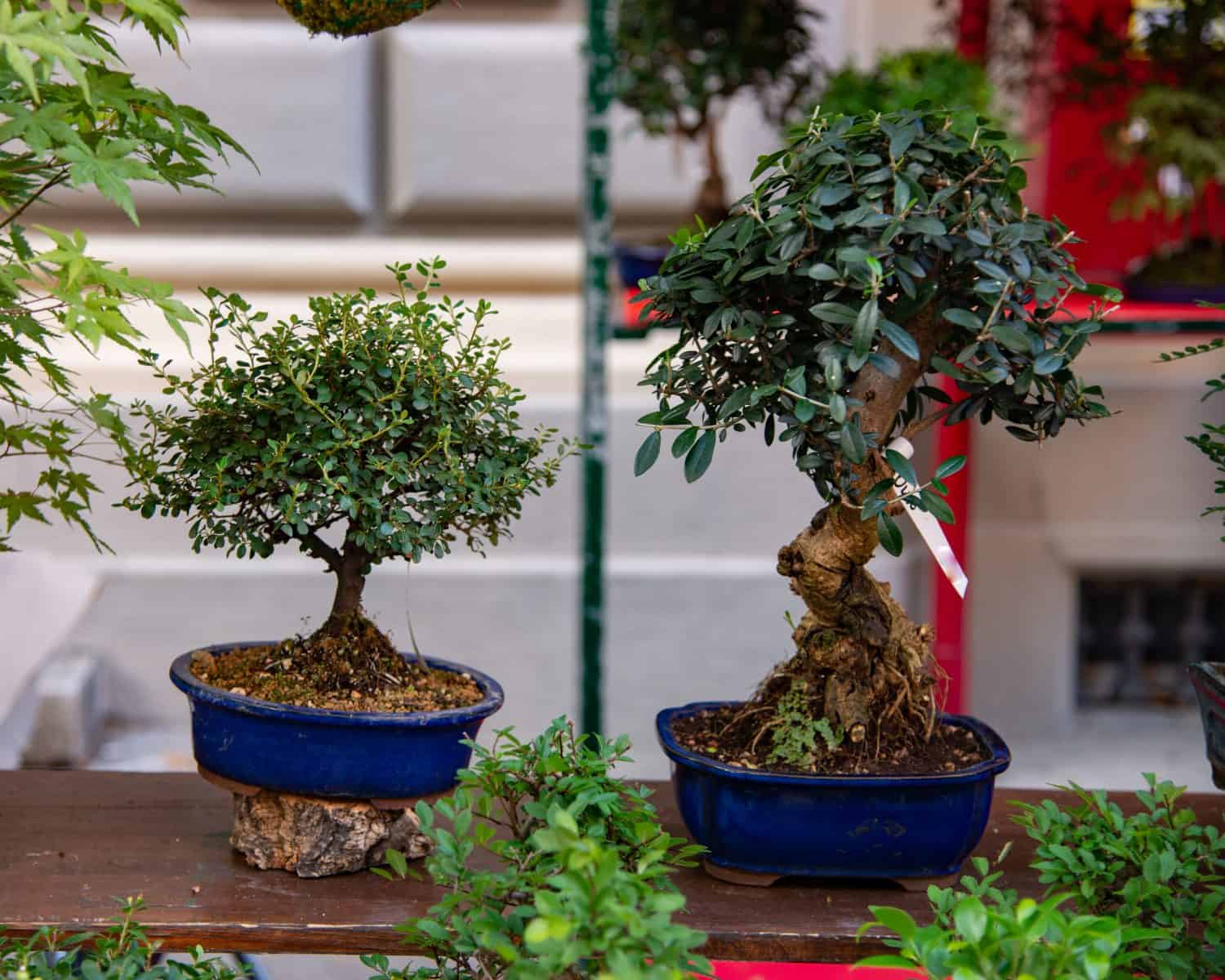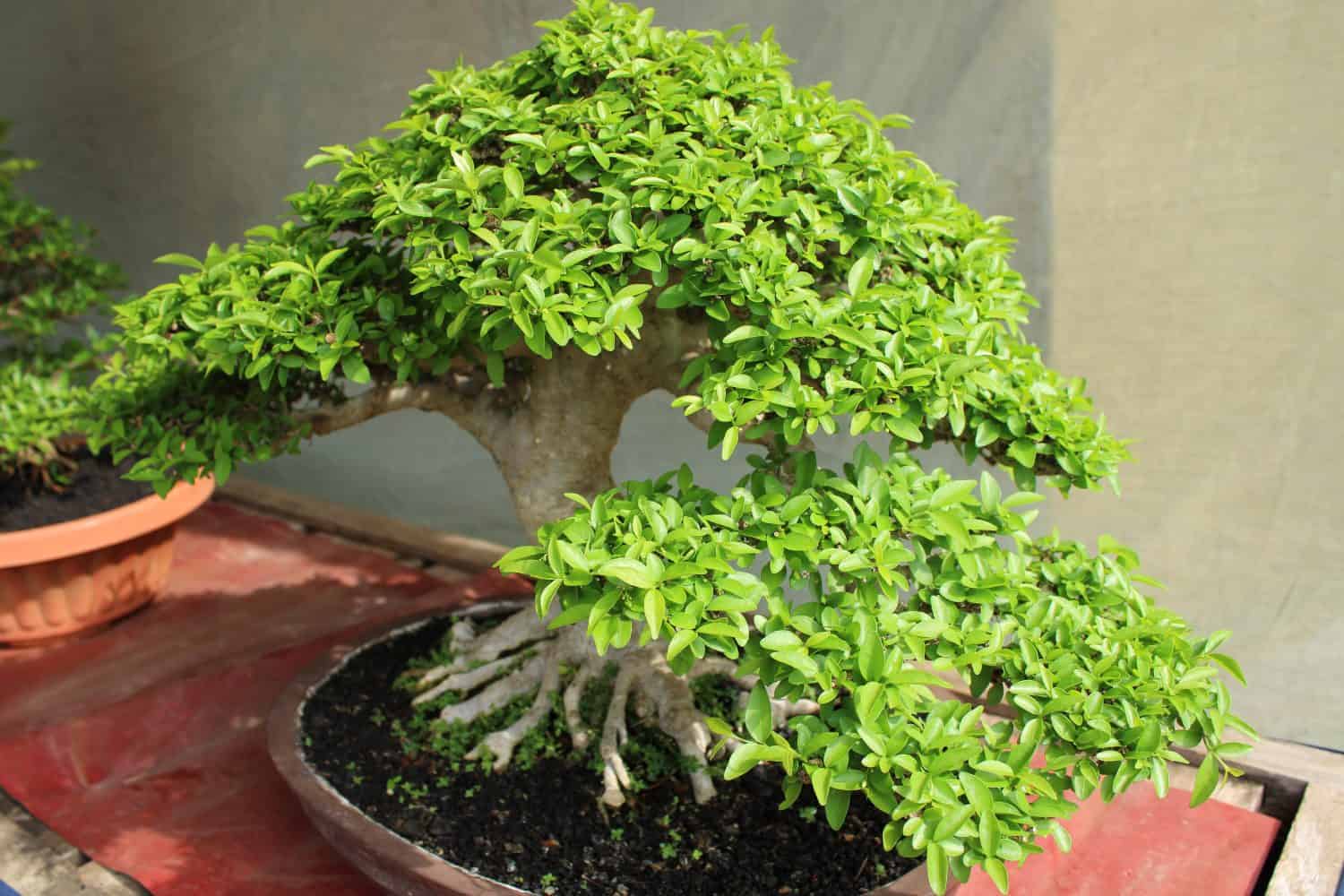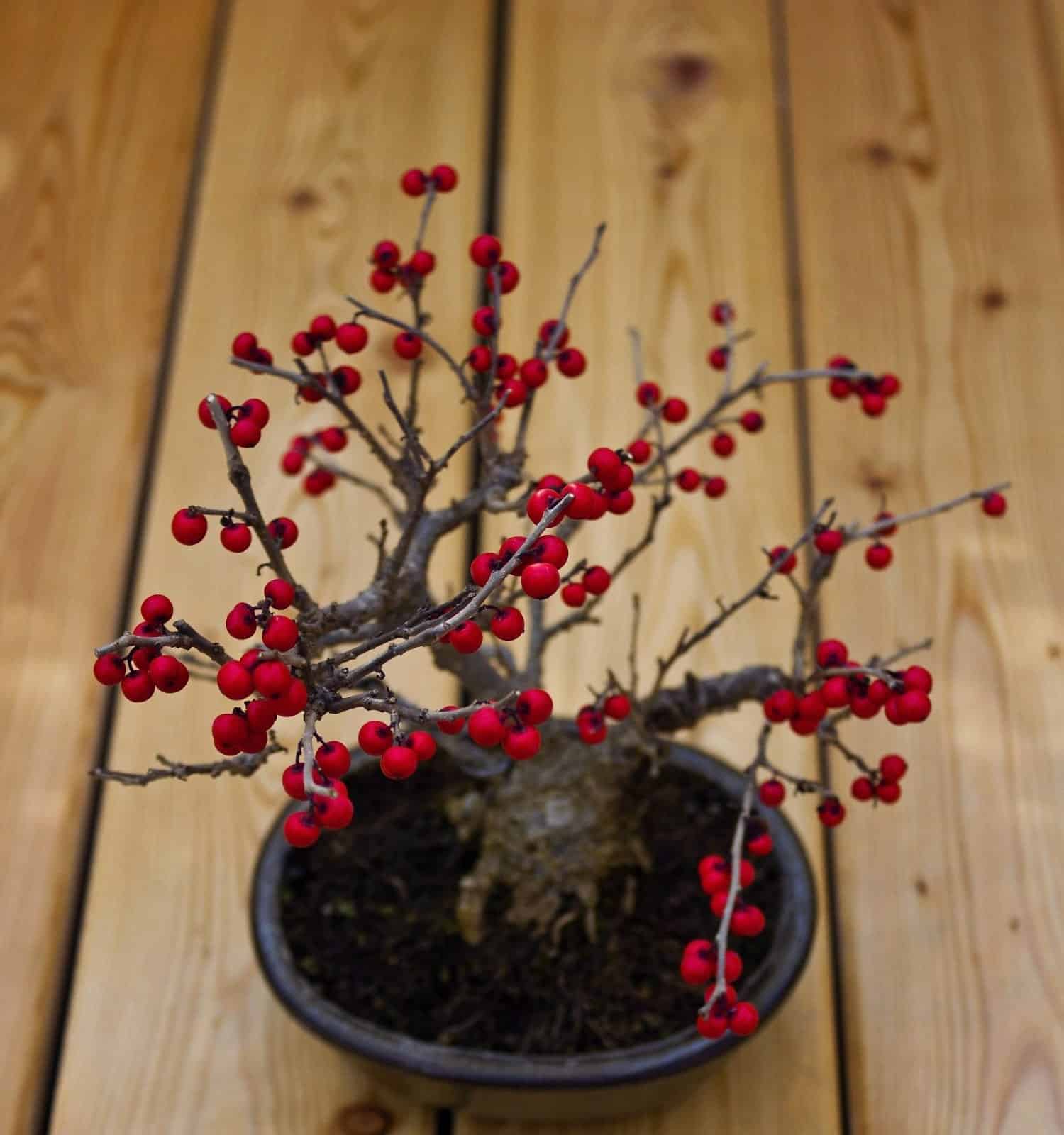Japanese winterberry bonsai trees are some of the most coveted trees in the collector community. These stunning bonsai trees produce eye-catching berries that make them a stunning addition to a collection and an instant hit.
In this article, we’ll cover how to care for a Japanese winterberry bonsai tree with care and growing instructions to help your plant thrive.
Let’s dig in!
| Top Japanese Winterberry Bonsai Tree Questions | Important Details |
|---|---|
| Botanical Name | Ilex serrata; Ilex crenata; Ilex verticillata x serrata (hybrid) |
| Popular Varieties | Japanese Deciduous Holly, Japanese Decidous White Holly, Dwarf Japanese Deciduous Holly, Japanese Evergreen Holly |
| Sunlight Requirements | Full sunlight |
| Soil Type | Well-draining aerated soil with Akadama, pumice, and organic content |
| Watering Frequency | Water regularly for consistent moisture |
| Ideal Placement | In a sunny, sheltered area, overwintered indoors. |
| Beginner-Friendly? | Intermediate. Requires some experience, but not difficult. |
| Pairs Well With… | Other holly trees for pollination |
Common Types of Japanese Winterberry Bonsai Trees

is a popular bonsai option.
©Roza_Sean/Shutterstock.com
There are a few types of Japanese winterberry bonsai trees to choose from. Many cultivars stem from two main species: Ilex serrata (Japanese deciduous holly trees) and Ilex crenata (Japanese evergreen holly trees). You may also see the botanical name Ilex verticillata x serrata for hybrid species of common winterberry trees from Europe and North America combined with Japanese species.
Understanding the type of Japanese winterberry bonsai tree you have will help you determine whether it will produce berries and its pollination and care requirements. It’s important to note that only female Japanese winterberry trees will produce berries.
Japanese Deciduous Holly
Ilex serrata is a Japanese deciduous holly tree. This stunning tree will grow 8-15 feet tall in its natural environment. Its stunning green foliage and ability to produce shiny red berries make it a popular species for bonsai work.
Japanese Deciduous White Holly
Ilex serrata ‘Leucocarpa’ is a Japanese winterberry cultivar that produces white berries instead of red. These cultivars are rare but offer a nice aesthetic alternative to the traditional red berries.
Dwarf Japanese Deciduous Holly
Ilex serrata ‘Subtilis’ is a dwarf variety of the Japanese deciduous holly. These trees grow shorter than true Ilex serrata in their natural environment, making them a manageable option for bonsai work. This cultivar is also hermaphroditic and will self-pollinate to produce berries, so you don’t have to worry about identifying your tree!
Japanese Evergreen Holly
Ilex crenata is the evergreen Japanese winterberry species. Rather than the sharp, waxy leaves of Ilex serrata, this species is coniferous. The female of this species produces dark blue-black berries when pollinated.
Male vs. Female Japanese Winterberry Bonsai Tree

Male winterberry bonsai trees don’t produce berries.
©hidayat R/Shutterstock.com
Identifying whether you have a male or female winterberry tree is essential for determining how to care for this plant. Only female winterberry trees will produce berries, and they require a male tree for pollination.
If you purchase an established winterberry bonsai tree with berries, you can feel confident that you have a female tree! However, a berry-heavy tree may not yield the same results next year if you don’t have access to a pollinator.
Fortunately, it’s simple to identify the sex of your tree even when berries aren’t present by looking at the blooms.
Male winterberry trees will have dense clusters of many flowers and several long, thin stamens growing outward from the center. Female winterberry trees have fewer blooms growing in clusters (typically no more than three). While they may have a few stamen-like structures, the most notable difference is the presence of a pistil. This structure is thick and green in winterberries.
You will need a female Japanese winterberry bonsai tree to produce berries. Yet, this lovely bonsai can be pollinated by any male holly plant.
Caring for Your Japanese Winterberry Bonsai Tree

Deciduous Japanese winterberry bonsai trees love the sun.
©Real Moment/Shutterstock.com
Caring for your Japanese winterberry bonsai tree will look a bit different depending on whether you have a deciduous or evergreen variety. Identify your species and adjust accordingly.
Sunlight Requirements
Deciduous Japanese winterberry bonsai trees prefer full sun exposure, preferring bright direct or bright indirect sunlight for 6-8 hours a day during the active growing season. You may need to supplement with a grow light to help your bonsai tree produce blooms.
Evergreen Japanese winterberry bonsai trees are more shade-tolerant and better suited for indoor growth. If you place them in a sunny window, increase the watering frequency to prevent the roots from drying out and dying.
Soil Type
Both deciduous and evergreen species require soil that’s well-draining and offers suitable moisture retention in equal measure. If the root system of your bonsai tree dries out, it will die. However, oversaturation could lead to root rot and bacterial growth.
Opt for a bonsai soil with equal parts Akadama (clay), organic matter (compost), and grit (perlite or pumice). If you have a deciduous variety, increase the ratio of clay.
Watering Frequency
Water your deciduous Japanese winterberry regularly to ensure the soil remains moist and the root system remains healthy.
Evergreen Japanese winterberry trees are more drought tolerant and will perform better with less frequent watering, especially during the winter months. However, proper drainage is important to let the water move away from the roots to avoid root rot.
Ideal Placement
Place your deciduous Japanese winterberry outdoors during the summer or in a sunny window. Keep it away from drafts and vents. This species can survive outdoors in USDA zones 5-9 but should be overwintered indoors if you’re outside USDA zones 7-9.
Place your evergreen Japanese winterberry in a sunny room away from the window. If you keep it outdoors, ensure it’s in a sheltered area during the colder months to prevent breakage and root shock. This plant will grow outdoors in USDA zones 6-8.
Pruning Your Japanese Winterberry Bonsai Tree
Deciduous Japanese winterberry trees should be pruned in the spring at the beginning of the growing season. You can also pinch out some buds to encourage additional growth. Wire annually in the summer.
Conversely, evergreen Japanese winterberry trees should be pruned in the fall to help prepare for the frost. Additional pruning at peak growing season in the summer can help reduce weak branches and encourage thicker growth. Wire biannually in the spring to prevent damage.
Propagating Your Japanese Winterberry Bonsai Tree
The easiest way to propagate a Japanese winterberry bonsai tree is through stem cuttings. Take a cutting of an established female tree using clean, sterile trimmers. Plant the cutting in bonsai soil and keep the soil moistened until roots form. You can also dip the cutting in rooting hormone to encourage growth.
Air layering is a more advanced technique that many bonsai artists use to propagate their trees. This approach entails forcing a branch to form new roots by interrupting the nutrient supply with a tourniquet (tightly wound wire around a branch) or ring (carving around the branch). Bonsai beginners should stick with stem cuttings while starting out.
Common Problems with a Japanese Winterberry Bonsai Tree
Japanese winterberry bonsai trees are susceptible to many of the same ailments as other house plants. Watch for the presence of mealybugs, scale insects, gnats, spider mites, and aphids. Wipe away pests with a warm, damp cloth and dish soap. If the pests continue to return, treat the tree with a gentle fungicide or neem oil.
Watch for signs that your Japanese winterberry bonsai tree is failing to thrive. This could be apparent with wilting or yellowing leaves, or minimal blooming. Address your bonsai’s placement to determine if it’s not getting enough sunlight or too much (depending on the species). Revisit your watering schedule and test the soil to determine whether fertilizer is needed.
If your Japanese winterberry bonsai tree isn’t producing berries, check the gender using the tips listed above. If you have a female plant, you may need to invest in male plants for pollination. Placing your bonsai trees outdoors during the summer months will also help with the pollination process.
Thank you for reading! Have some feedback for us? Contact the AZ Animals editorial team.







